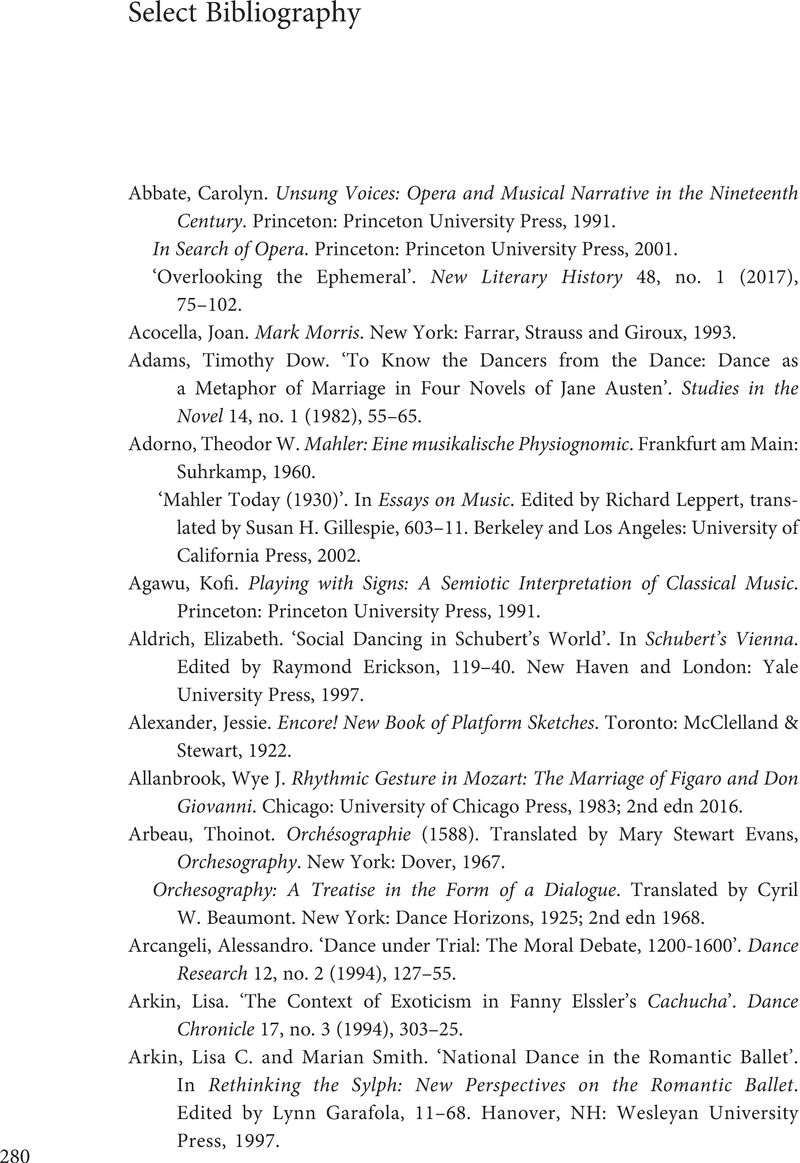Select Bibliography
Published online by Cambridge University Press: 09 September 2020
Summary

- Type
- Chapter
- Information
- Musicology and DanceHistorical and Critical Perspectives, pp. 280 - 301Publisher: Cambridge University PressPrint publication year: 2020

